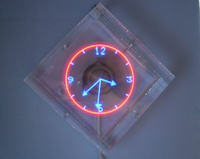
At the beginning I would like to say hi, because as you can see this is my first post. I've been browsing the electrode for a long time, but I've never been on the forum. Today I decided to take a step forward, show myself with something specific.
The idea of the project is as old as the world, repeatedly rolled out on the forum. Nevertheless, I would like to show my implementation of this idea.
The system consists of two main parts: a programmable propeller and a drive part.
==============================
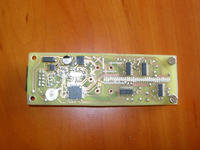
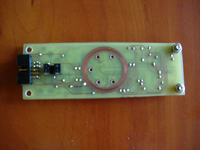
The heart of the system is the ATMEGA32 microcontroller that manages the display content. It drives 32 blue smd diodes via 4 serial LED MBI5170 drivers. The time is taken from the RTC DS1307 system, with the uC it is connected by the I2C bus. Image synchronization is of course realized by an optoelectronic sensor. 32 KB of flash memory in ATMGA allow support for multiple display modes.
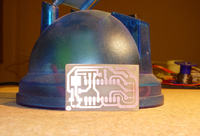
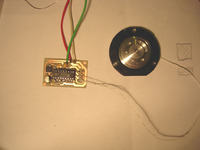
I tried many solutions and the HDD motor turned out to be the best. It works almost silently, has a high speed of rotation, 6 threaded holes for easy attachment of the propeller. The use of such an engine, however, was associated with the use of a special control. The optimal solution seemed to be the use of a dedicated PHILIPS TDA5140A driver working in the standard configuration (although not entirely, because the winding in the motor is connected by a triangle, so it was necessary to create a point of an artificial center). Energy is transported by brushes. I am aware of the imperfections of such a solution, but I did not want to complicate the project further. In this matter, I leave the door open to designing the next version.
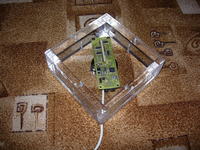
As you can see, the casing is made of 15 mm plexiglass. Such thick walls mean that at 50 revolutions per second, the noise level produced by the clock is kept at a very decent level. Additionally, if something inside should be broken by accident, no one in the vicinity of their heads will lose their heads. The back cover is fixed with 4 screws, the rest of the structure is glued with ACRIFIX 192 glue.
As I am not a professional, the documentation created during the production of the clock has many flaws, so I am not enclosing it yet. I will try to refine it a bit and then post it on the forum.
I am open to any suggestions regarding the project.
Below is a link to a video showing the clock's work:
http://pl.youtube.com/watch?v=no2_M_b059g " target="_blank" rel="nofollow noopener ugc" class="postlink inline" title="" > http://pl.youtube.com/watch?v=no2_M_b059g
========
I added documentation. I apologize in advance for any shortcomings.
Regards
mb1988
Cool? Ranking DIY





